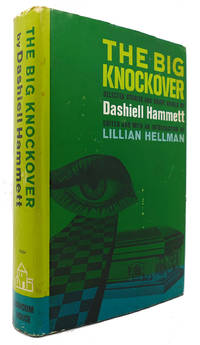
THE BIG KNOCKOVER
de Dashiell Hammett
- Usado
- Tapa dura
- Estado
- Ver descripción
- Librería
-
Pomona, New York, United States
Formas de pago aceptadas
Sobre este artículo
Sinopsis
Dashiell Samuel Hammett was born in St. Mary’s County. He grew up in Philadelphia and Baltimore. Hammett left school at the age of fourteen and held several kinds of jobs thereafter—messenger boy, newsboy, clerk, operator, and stevedore, finally becoming an operative for Pinkerton’s Detective Agency. Sleuthing suited young Hammett, but World War I intervened, interrupting his work and injuring his health. When Sergeant Hammett was discharged from the last of several hospitals, he resumed detective work. He soon turned to writing, and in the late 1920s Hammett became the unquestioned master of detective-story fiction in America. In The Maltese Falcon (1930) he first introduced his famous private eye, Sam Spade. The Thin Man (1932) offered another immortal sleuth, Nick Charles. Red Harvest (1929), The Dain Curse (1929), and The Glass Key (1931) are among his most successful novels. During World War II, Hammett again served as sergeant in the Army, this time for more than two years, most of which he spent in the Aleutians. Hammett’s later life was marked in part by ill health, alcoholism, a period of imprisonment related to his alleged membership in the Communist Party, and by his long-time companion, the author Lillian Hellman, with whom he had a very volatile relationship. His attempt at autobiographical fiction survives in the story “Tulip,” which is contained in the posthumous collection The Big Knockover (1966, edited by Lillian Hellman). Another volume of his stories, The Continental Op (1974, edited by Stephen Marcus), introduced the final Hammett character: the “Op,” a nameless detective (or “operative”) who displays little of his personality, making him a classic tough guy in the hard-boiled mold—a bit like Hammett himself.
Reseñas
(¡Iniciar sesión or Crear una cuenta primero!)
Detalles
- Librería
- Rare Book Cellar
(US)
- Inventario del vendedor #
- 124071
- Título
- THE BIG KNOCKOVER
- Autor
- Dashiell Hammett
- Formato/Encuadernación
- Tapa dura
- Estado del libro
- Usado
- Edición
- Second Printing
- Editorial
- Random House
- Lugar de publicación
- New York
- Fecha de publicación
- 1966
Términos de venta
Rare Book Cellar
Payment Methods Accepted Personal Checks, Cashiers Checks, Money Orders, Visa, MasterCard, AMEX and Discover card through PayPal.com Shipping and Refunds All items are shipped though the United States Postal Service. All items are returnable, within 10 days of receipt if not as described. If you have any special requests, questions or comments please feel free to contact us. Via Email: Info@rarebookcellar.com Via Phone: 845-512-8229
Sobre el vendedor
Glosario
Algunos términos que podrían usarse en esta descripción incluyen:
- Rubbing
- Abrasion or wear to the surface. Usually used in reference to a book's boards or dust-jacket.
- Edges
- The collective of the top, fore and bottom edges of the text block of the book, being that part of the edges of the pages of a...
- Jacket
- Sometimes used as another term for dust jacket, a protective and often decorative wrapper, usually made of paper which wraps...
- Good+
- A term used to denote a condition a slight grade better than Good.
- Shelf Wear
- Shelf wear (shelfwear) describes damage caused over time to a book by placing and removing a book from a shelf. This damage is...